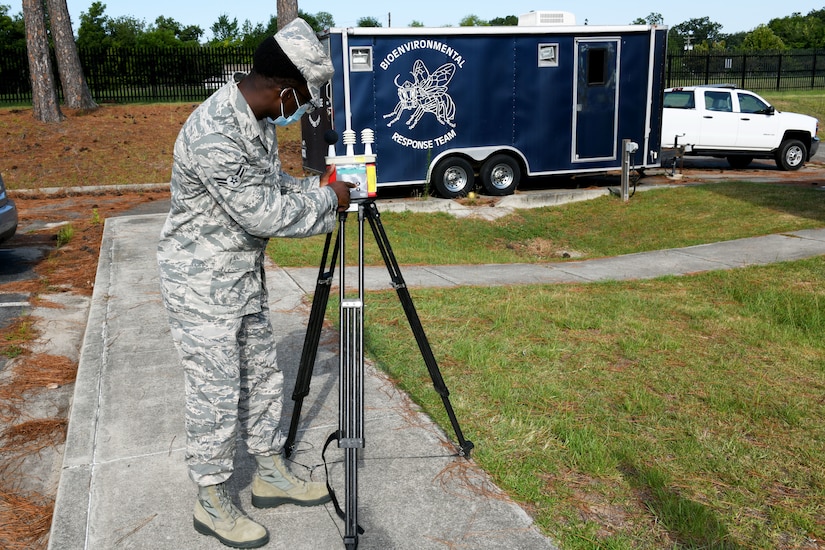
As Team Robins enters August, the temperatures in Middle Georgia have been in the mid 90’s. As the temperature rises throughout the day the 78th Operational Medical Readiness Squadron Bioenvironmental Team keeps Robins Air Force Base in the know.
“Bioenvironmental personnel are required to document and communicate heat stress categories conditions when weather reaches temperatures above 85 degrees,” said Tech. Sgt. Steven Matthew, 78th OMRS Health Operations non-commissioned officer-in-charge.Bioenvironmental Airman use a thermal environmental monitor to record levels.
“The Wet Bulb Globe Temperature Measurement device measures the environment in three parts,” said Airman 1st Class Josue David, 78th OMRS Bioenvironmental Engineering technician. “The black bulb records the direct sun light temperature, wet bulb records wind and humidity effects and dry bulb records regular ambient temperature.”
According to Air Force Instruction 48-151, Thermal Injury Prevention Program, there are four heat guidelines for average acclimatized individuals. The heat guidelines are shown as flags: green flags for 82-84.9 degrees, yellow flags for 85-87.9 degrees, red flags for 88-89 degrees, and black flags for 90 degrees and greater.
For instance, a green flag with a WBGT reading of 82-84.9 degrees under easy work condition has no rest cycle, but easy work in this range still requires a person to drink at least 24 ounces of water per hour. As the work level increases and the WBGT rises, the work time decreases and the rest cycle increases to help prevent heat related injuries.
A WBGT reading of 90 degrees or greater is in the black zone and the work cycle is 10 minutes with a rest cycle of 50 minutes. Workers should drink one quart of water per hour. In this case hard work should be avoided during black flag conditions.
Bioenvironmental Airmen measure multiple WBGT readings daily.
“We do this throughout the day, 8:30 a.m. to 4:30 p.m., every day,” said David. “This helps to develop the work rest/cycles depending upon the current temperature for the flag conditions each hour.”
When the temperatures rise and work conditions become dangerous bioenvironmental Airmen are there to remind Team Robins to look out for themselves and their wingmen.
David said, “It makes me feel good to be that little alarm clock - a constant reminder telling the base it is black flag conditions. Drink water and to take care of yourselves.”
"behind" - Google News
August 06, 2020 at 11:28PM
https://ift.tt/3kjTfr4
78th ORMS: Bioenvironmental team explains WBGT science behind - Robins Rev Up
"behind" - Google News
https://ift.tt/2YqUhZP
https://ift.tt/2yko4c8
Bagikan Berita Ini














0 Response to "78th ORMS: Bioenvironmental team explains WBGT science behind - Robins Rev Up"
Post a Comment